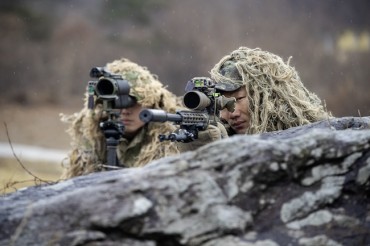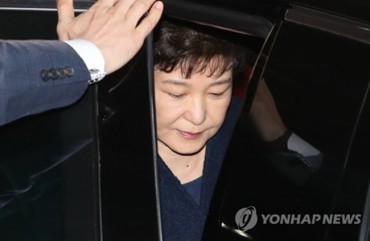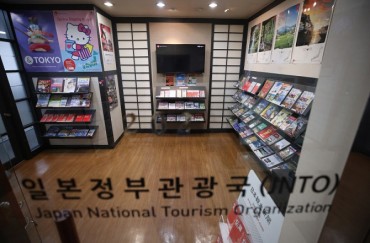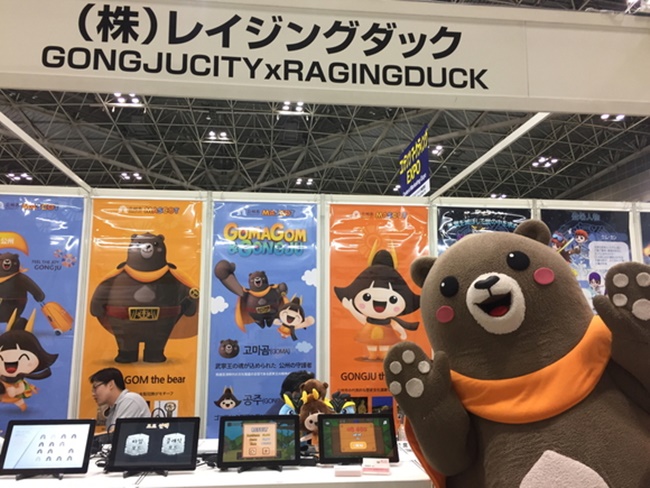
Following in the footsteps of Hodori and Goomdori, successful South Korean mascots that enjoyed national recognition, representing the 1988 Summer Olympics and Daejeon Expo ’03, respectively, local governments have been making notable efforts to promote and boost their communities and economy in recent years. (Image: Gongju City)
SEOUL, Aug. 28 (Korea Bizwire) – South Korean local governments are focusing on developing and promoting their own mascots amid growing public interest in what are known locally as ‘characters’.
Following in the footsteps of Hodori and Goomdori, successful South Korean mascots that enjoyed national recognition, representing the 1988 Summer Olympics and Daejeon Expo ’03, respectively, local governments have been making notable efforts to promote and boost their communities and economy in recent years.
The government of Gongju joined the trend on Sunday as it announced comprehensive plans to use its mascots Gomagom and Gongju in the promotion of the city of Gongju in South Chungcheong Province.
Goma is an old name referring to what is now the city of Gongju and ‘gom’ means ‘bear’ in Korean.
Gongju, while also the city’s name, means ‘princess’ in the Korean language, making the characters Gomagom and Gongju a perfect word play for the city.
The cute and smiley duo of Gomagon and Gongju even won an award for Communication Design at the Red Dot Design Awards in 2015, receiving international recognition and proving the significant influence that mascots can bring to local governments.
Recently, Gongju government officials also met with government officials from Kumamoto Prefecture in Japan to explore ways to collaborate with their famous mascot Kumamon.
“The character industry has great potential but it has yet to come to fruition in South Korea. We’ll put effort into making the city of Gongju the leading city in the character industry,” Yu Byeong-deok, the deputy mayor of the city, said.
Cheongyang County in the same province as Gongju has also recently finished the process of obtaining a patent for its mascot Golden Luck Turtle.
Standing 5.5 meters tall and 6.5 meters wide in front of the Baekje Cultural Experience Museum, the statue of Golden Luck Turtle is part of the county’s marketing based on a number of gold animals found in the region.
“The color gold, which represents luck and wealth, is becoming our community’s own color. We are creating tourism products with the theme of the golden luck turtle and selling them at major tourist spots,” a county official said.
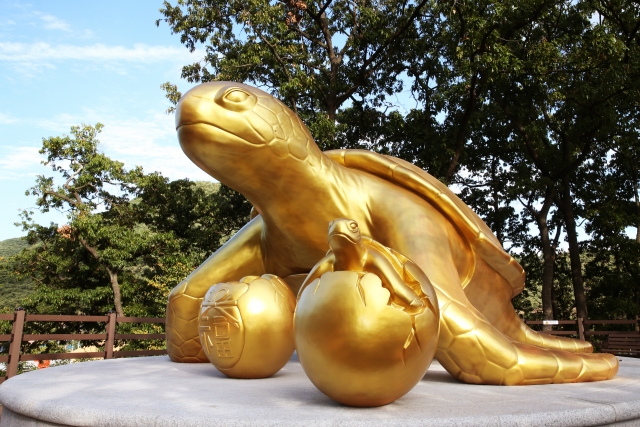
Standing 5.5 meters tall and 6.5 meters wide in front of the Baekje Cultural Experience Museum, the statue of Golden Luck Turtle is part of the county’s marketing based on a number of gold animals found in the region. (Image: Cheongyang County)
Boryeong, another city in South Chungcheong Province, also jumped on the bandwagon and introduced a new mascot that celebrates the city’s renowned annual mud festival, producing a number of products with the character such as towels, pens, caps and t-shirts.
“Mascots are easy to commercialize. Through parades and other means, we plan to promote the mascots to more people,” a Boryeong city official said.
Ashley Song (ashley@koreabizwire.com)



